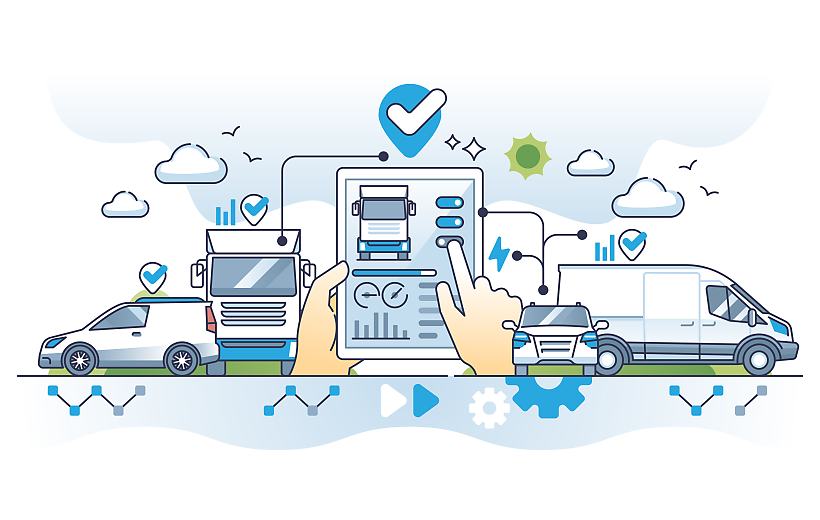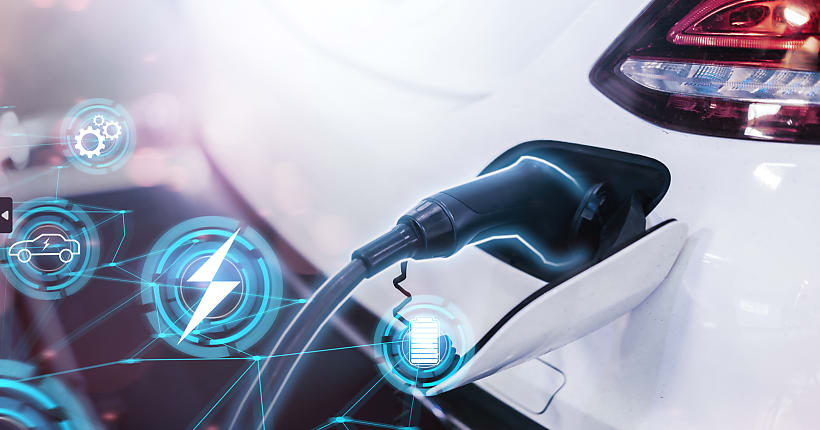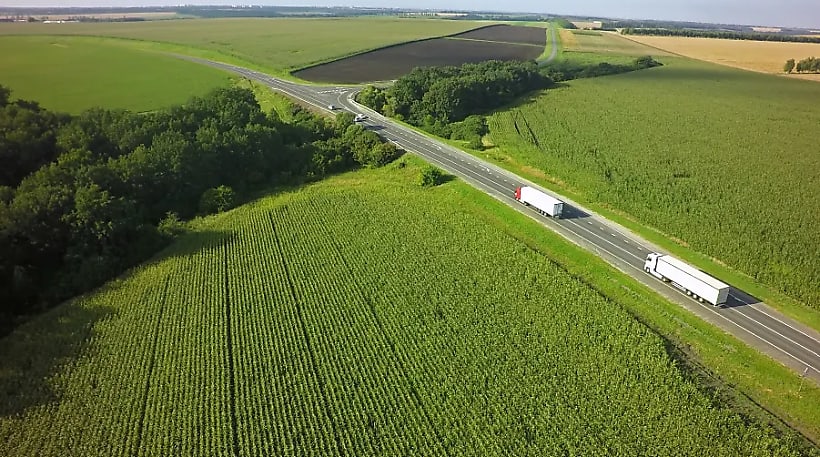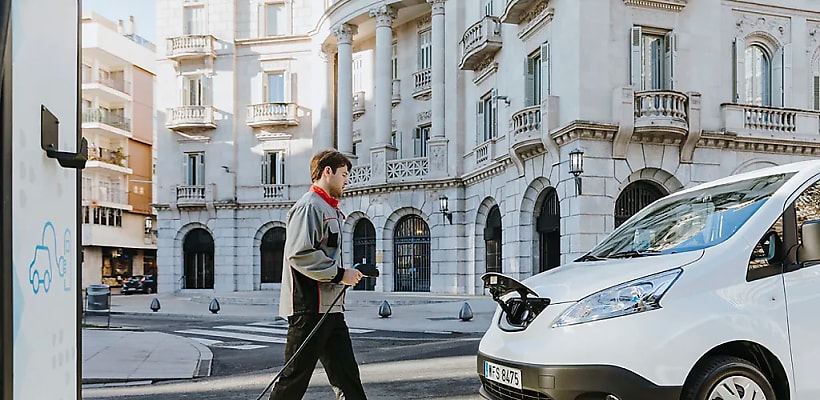Are you a fleet manager curious about the next steps to take around decarbonisation? You’re not alone. That’s why we hosted our recent ‘Fleet Decarbonisation Live‘ event, where an expert panel tackled burning questions in a live Q&A format. Gain valuable insights into fleet decarbonisation efforts, shared by five leading professionals covering different areas of the industry. In this post, we’ll dive into the top 6 questions that dominated the discussion, to help drive your fleet towards a more sustainable tomorrow.
Click here to watch the on-demand recording of this unique and informative event.
Decarbonisation is a complex issue, for sure. If you’re just starting out on your journey, this post should shed light on moving past key challenges. We understand that every fleet is unique. So if you need more personalised advice, just let us know—book a free consultation with one of our fleet decarbonisation experts.
1. How can I overcome the challenges when starting to decarbonise my fleet?

The key here is working incrementally. Strive for the low-hanging fruit—the easy wins that propel your journey forward. What those wins are will look differently for each fleet, depending on the unique business dynamics at play.
One of the trickiest challenges our entire industry faces is decarbonising HGVs. So, if you run a truck fleet, you’re not alone on this challenge. If you run an LCV or mixed fleet, you might be wondering how to bring in EVs efficiently and cost-effectively.
At Webfleet, we aim to make it as easy as possible for fleets to transition. To do that, we work to provide the right data in the right format so that fleet operators can make informed decisions, with as little risk as possible.
This way, fleet operators can develop line-by-line insights at the vehicle level, which is what they need to advance their electrification. With our comprehensive fleet management solution, your business can stay on top of:
- The geographical locations of every vehicle in your fleet
- Performance metrics like fuel consumption and tyre health
- Maintenance scheduling and repair history on every vehicle
- Remaining charge status for any electric vehicles you have
With such insights, you can identify and eliminate efficiencies that may be acting as blockers. While it’s important to draw insights from your fleet data, don’t stop there. Speak with other fleet managers who have successfully made the transition. Ask for guidance from the customer success team at your fleet management solution provider.
2. Where does hydrogen fit in the race for sustainable fuels?

That largely depends on the makeup of your existing fleet. If you’re running a small LCV fleet that already relies on a high percentage of electric vehicles, you’re probably not going to factor in hydrogen at all.
Hydrogen wouldn’t be efficient for you, because the infrastructure isn’t there—and it takes a lot of energy to produce it, making it cost-prohibitive. The vehicles aren’t fully there, either.
But do consider the view of OEMs, some of which are gearing up for a hydrogen future. They certainly see a hydrogen need for larger vehicles. George Newton, Key Account Manager at Iveco, told us that Iveco is running vehicle trials in the United States, with results looking good so far. We imagine that means we’ll be hearing about those learnings in due time. For now, here are a few things to consider:
- Hydrogen needs to be created, and it needs to be stored
- Creating hydrogen is a process of converting renewable energy (wind, solar) into usable fuel, representing a 40% loss in energy
- Then there’s a further 10% loss for the energy required to pressure and store it
- Turning the fuel back into electricity for vehicles results in another 20% loss
While there’s a 70% loss in energy to create hydrogen, far less energy would be wasted if we started storing energy generated from wind turbines, something that John Curtin of EV Café in the UK has pointed out to us.
3. Is there still a place for hybrid technology?

It depends on who you ask. Providers of charging infrastructure will give you a resounding “No.” They say that while hybrids helped fill a crucial gap, their purpose has been served. To fully decarbonise, we need to look to a near future with little to no use of petrol.
It’s now possible to do long journeys with electric vehicles, so why would we even consider sticking with the solution of hybrids, especially for car or van fleets? Also, there are fewer moving parts in electric vehicles, making them easier and more cost-effective to maintain.
The infrastructure for EV charging is expanding and improving. Those who drive EVs find that they often stop for a coffee or WC break, taking the opportunity to charge up. By the time they’ve ordered their coffee and relaxed a bit, the vehicle is ready to go again. So, the days of worrying about charging availability or efficiency are pretty much coming to an end.
4. How can I best train my drivers for electric vehicles?

It takes some education to help drivers understand how to get the best performance out of electric vehicles. Above all, you need to give your on-road team the tools to make the right choices. Here are they types of things drivers need to know about:
• Put the car into eco mode before driving—this doesn’t happen automatically
• It’s of course OK to use air conditioning, but it’s best to use it only when needed
• Battery charging times, which can help them plan some stops accordingly
Improving driving performance with EVs requires a different set of metrics than for internal combustion engine (ICE) vehicles. Indeed, your drivers will still need a clear understanding of metrics like acceleration and braking. But with EVs, metrics like these also come into play:
- Low air conditioning use
- How often eco mode is activated
If you invest plenty of time in driver training as you electrify, you will likely see significant payoffs in fleet efficiency. Additionally, you can use Webfleet’s driving performance insights to help your drivers adapt to electric vehicles.
5. What is the biggest blocker to fleet decarbonisation?

We’re not sure we can boil it down to one blocker. On the one hand, it’s largely a people issue. A good number of people are resisting the changes they already know need to be made. Beyond this basic fact, there are fleet-specific issues to consider.
For HGV fleets, underinflated tyres have a huge impact on fuel efficiency. Properly inflated tyres help reduce fuel costs as well as emissions. Cost is especially important: Without fuel efficiency, fleets can lack the extra-budgetary resources to invest in EVs. If we were to offer a call to action here, it would simply be: Maintain the right tyre pressure (Webfleet’s TPMS solution makes this quite easy to do).
On a business level, you may be dealing with internal hesitations from company leadership. As a fleet manager, decarbonisation doesn’t rest on your shoulders alone. But assuming you’re eager to get key stakeholders on board, take them on the journey with you. Tell a powerful story about business efficiency, profitability and reputation. Back everything up with data (we can help you do this by booking a call with one of our EV experts).
Let’s address the elephant in the room. Politics is particularly challenging right now, and that reality plays a role in blocking decarbonisation. The cost implications of electrification can make this blocker particularly tough to move past. At the same time, working together as an industry to tackle disinformation and highlight the benefits for all of us can lead us to success.
6. How do I maintain driver productivity with an electric fleet?

This is an important question. The blunt truth is that you can’t just move from ICE vehicles to EVS and expect nothing to change. Electrification requires adaptability. But your business already does that all day, every day. In that sense, adding EVs to your fleet isn’t any different.
One thing to consider is vehicle uptime. Because electric vehicles tend to need less servicing, your productivity boost starts right there—with vehicle availability. Of course, there is some downtime for charging involved. But with optimised route planning and charging routines, you can avoid lost productivity.
Here are a few suggestions we’ve received from Webfleet customers with EVs in their fleets:
- Equip drivers with as much information as possible
- Consider giving drivers the responsibility of route planning, so they can determine the most efficient times to charge up, whether it’s during lunch breaks or while doing paperwork
- Educate your office team too, especially if they’re involved with route planning—they need to understand what your electric vehicles are capable of
- As hinted at in question 5 above, make sure your company’s middle management is fully on board with what you’re trying to achieve








